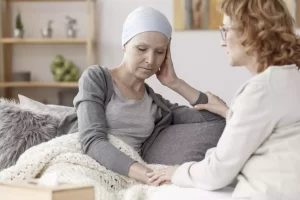Proprioception and muscle stiffness
The key to understanding the causes of chronic pain in our muscles and joints lies within our proprioception, which is being aware of movement, and feeling ourselves. Muscles and most tissues in the body have sensory cells and receptors that tell the brain what is going on in and around the body.
When the muscle tenses up and contracts or relaxes and expands, and everything is as it should be with our proprioception, then we will feel that immediately. We also have sensory cells in the joints, which tell us how much pressure is in them and determine the joint’s position and angle. The skin constantly sends out sensory data, and the internal organs communicate the organs’ state with the nerve endings of the brain. Proprioception involves the entire central nervous system, from the body’s sensors to the sensory part of the brain. In the brain, the sensory part is connected to the motor part so that the sensory information coming from the body becomes the guide for the movement commands that we send back to the same area. The sensory-motor system is designed so that we cannot feel without movement, and we cannot move without feeling. When we move, we sense our movement, while feedback allows us to know what we are doing and where we are. This constant exchange of senses and orders allows us to live and learn.
When we want to lift and hold a coffee cup with our hand, we will not drop and spill it. This is possible because sensors in the muscles, skin, and joints of the brain communicate at any time where and in which direction the arm is located and at what speed it is moving. Our movement is enabled and determined by sensory-motor feedback.
Problems occur when we gradually begin to lose the ability to feel ourselves and our movement. Eventually, it becomes rigid and clumsy because we are losing the synchronicity between contracting some and expanding other muscles that allow movement. As a result, the ability to reduce the motor signal from the nervous system to the muscle is reduced, so it becomes overstretched, contracted, and rigid. When muscles harden, the conscious part of the feedback loop of sensory-motor information is reduced and interrupted, so we slowly cease to be aware of muscles and certain parts of the body. That is when the state we know as sensory-motor amnesia sets in. It causes us to stop moving properly; we can no longer tense or relax certain muscles. Then one day, it happens to us that when we try to turn our head, we find that the neck is no longer the most flexible. When we get to this point, it means that we have lost our primary control over our bodies’ movement.
There are five cardinal lines in our bodies. The first goes from the top of our head to our tailbone, and the other four are our arms and legs. When we lie on our back still and observe ourselves, we notice that we look a lot like children’s drawings of a person. A long line represents the spine, two short lines for hands, two lines for legs, and a circle for a head. If we direct our attention to our legs, we notice that they are either warm or cold, pointing upwards. If we focus on our knees, we sense how much space there is between their backside and the ground. If we look at our head, we will learn that it is tilted either left or right; if we focus on our eyes, they will most likely reveal that we feel the tension.
That way, we can familiarize ourselves with senses that we don’t normally use when on autopilot (in our daily life). It’s about being aware of ourselves, our bodies, and our movement. Sadly, most of us are illiterate when it comes to proprioception.
Humans are very good at observing the world and the things happening around us but are horrible at observing ourselves. This can already be determined in school. We teach our children to sit still and pay attention to the chalkboard and listen to the teacher, or else they’ll be in trouble. Most are getting better at perceiving the world around them but getting worse at self-awareness. They are slowly losing their inner connection with themselves, which is very strong in the first years of life.
For the first three or four years of a child’s life, he does nothing but explores his abilities, tests himself, learns from failed attempts, and looks forward to new movements. The child does not get used to walking, coordinating the neck and eyes’ movement, how to turn from the back to the abdomen and back, squatting – all this is learned through experience.
When he eventually loses his ability to learn through experience in his later life, he begins to focus too much on his surroundings and not enough on himself, so his motor skills decrease. He does too little research, stops observing, doesn’t study, and does not check his condition; he is focused only on the outside world. There is no time; he is in a hurry, so much still to be done; after all, he needs to survive. Unfortunately, it is precisely because of the need to survive, which in modern society means to be fast and rational with time, that living becomes surviving, as a person’s outward orientation, i.e., away from one’s proprioception, leads to a loss of conscious control over oneself.
This is even more necessary to restore our energy’s rational use, which allows us to avoid the patterns caused by everyday stress. We must not forget that man has shaped through his battle for survival, which resulted from energy deficiency and not a lack of time.






